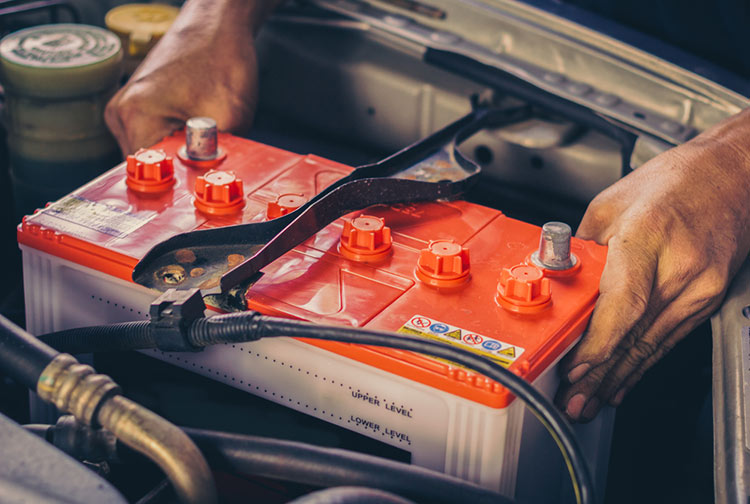5 Things You See Every Day in Your Home but Never Wonder About!

Wherever you roam around the world, home is the only place where your heart finds the greatest serenity. But how much attention do you pay to the things around you at home? Well, your brain is most relaxed when you’re at home. Therefore, you often tend to miss out on intriguing things that may leave you bamboozled if you pay attention to them. Check out these five things you see every day at your home that will make you scratch your head. Keep on scrolling down to explore the answers and get your mind blown!
1 Why do batteries lose charge even when you don’t use them?
Another of the interesting things you see every day at your home but perhaps do wonder enough about is that a battery loses its charge even if you do not take it out of the pack. The life period of a battery mainly depends on its size and type. However, regardless of their rating, type, or size, the batteries eventually lose charge after a certain time if you do not use them or even do not take them out of the pack. But why does it happen?
Well, the reason why batteries lose charge lies in their structure. Inside each battery are electrodes, which are rolled-up metal tape strips coated with oxide. Over time, the structure of the positively charged electrodes (i.e., anodes) gets corroded.
This corrosion occurs because of oxidation, i.e., due to the reduction of electrons on anodes, which is an irreversible process in most cases. It results in decreased effectiveness over time, eventually leaving the battery with no juice at all, even if you have never used it.
2 Why do clocks run clockwise?

We define the motion and movement of so many things by comparing their direction with that of the hands of a clock. And we all know that the hands of the clocks run only rightward, i.e., clockwise. But not many people know how things you see every day in your home do work. Likewise, it can leave you wondering why the clock’s hands do not move in an anticlockwise direction. The answer to this is hidden in the Sun’s path in the sky.
When you are in the northern hemisphere facing the path of the Sun in the sky, the Sun proceeds in a clockwise arc from the east to the southern sky above and then to the west. And when you make a sundial (an old Sun-based clock), the shadow it casts also follows a clockwise course from west to north, then east, i.e., in the opposite direction of the Sun’s path.
So, down the road, the makers of mechanical clocks also adopted the same phenomena of clockwise or rightward movement for the clock’s hands, i.e., the direction of a sundial’s shadow in the northern hemisphere. But why the northern hemisphere and not the south? Because almost 90% of the world’s population lives in the northern hemisphere. It also accounts for around 68% of all the land on the earth.
3 Why do mirrors flip horizontally but not vertically?
Not a single day goes by when you don’t see yourself in the mirror. But you can still miss the minute details about the things you see every day at your home. We all know that mirrors flip the reflections horizontally. But why do they do so? Moreover, why don’t mirrors flip reflections vertically? For example, if you see the reflection of the letter “b†in the mirror, it’ll become a “d.†Similarly, when you raise your right hand in front of a mirror, it’ll look like you raised your left hand. But why does the mirror not cast upside down, i.e., vertically flipped reflections?
The truth is that mirrors do not flip things left to right (i.e., on the x-axis) or upside down (i.e., on the y-axis); they flip them from front to back (i.e., on the z-axis). For example, if you point a finger to your left in front of a mirror, the reflection of your finger will also point in your left direction. Similarly, if you point in the right, up, or down, the reflection will also point in your right, up, or down direction. But when you point your finger in the direction of the mirror, i.e., away from you, you will find the reflection to be pointing at you! In other words, mirrors let you look at the object as it would look behind your head, without flipping your head.
4 Why do credit cards have an expiry date?

Credit cards are great! They allow you to shop on the go and pay later. While we all know that credit cards have an expiry date, not many understand why it is so. Renewal of a credit card is necessary from the point of view of keeping the card up to date. But the expiry date of your credit card has many more uses other than that. For the starter, the expiry date of your card acts as a security checkpoint. When making an online purchase, you will have to verify its expiry date to complete the transaction. So, even if someone has your credit card number, they cannot use it for purchases or whatsoever if they do not know your card’s expiry date.
Moreover, your credit card issuer equips the card with security features that keep your data safe and secure. They keep on rolling out new safety features from time to time. With the renewal of your card, you get a card with the latest safety features. For example, older cards did not have EMV chips or contactless payment features, whereas newer cards have these features enabled.
Apart from the above, the expiry of your credit card also gives an opportunity for your card issuer to remarket their latest offers and services to you. You can even get a limit enhancement deal, reward points, or a gift voucher with a credit card renewal.
5 How do ceiling fans collect dust when they’re constantly in motion?

No matter how many times you clean your fan, it seems your fan has a magnet that attracts so much dust to it. The reason why your fan gets so much dust even when it’s moving all the time is one of the things you see every day at your home, but you might not know why it happens.
We all know about static electricity. After all, who doesn’t remember rubbing balloons on their head to get their hair to stand upright? Apparently, that is the very reason why dust accumulates on the blades of a fan. When you turn on the fan, the blades move rapidly in the air brushing through air molecules. It creates a static electricity charge on the blades of the fan.
Moreover, the air in your house has so many tiny dust particles that are also electrostatically charged. The dust particles attract other oppositely charged dust particles when moving in the fan air. These dust particles eventually get attracted to the electrostatically charged edges of the fan blades. Most of the dirt particles gather on the edge of the fan blade as it has the highest amount of charge due to constant friction with the air. And that’s how you get dust on your ceiling fans even when they’re moving continually.
10 Design Features on Everyday Items You Never Knew Had a Purpose
























